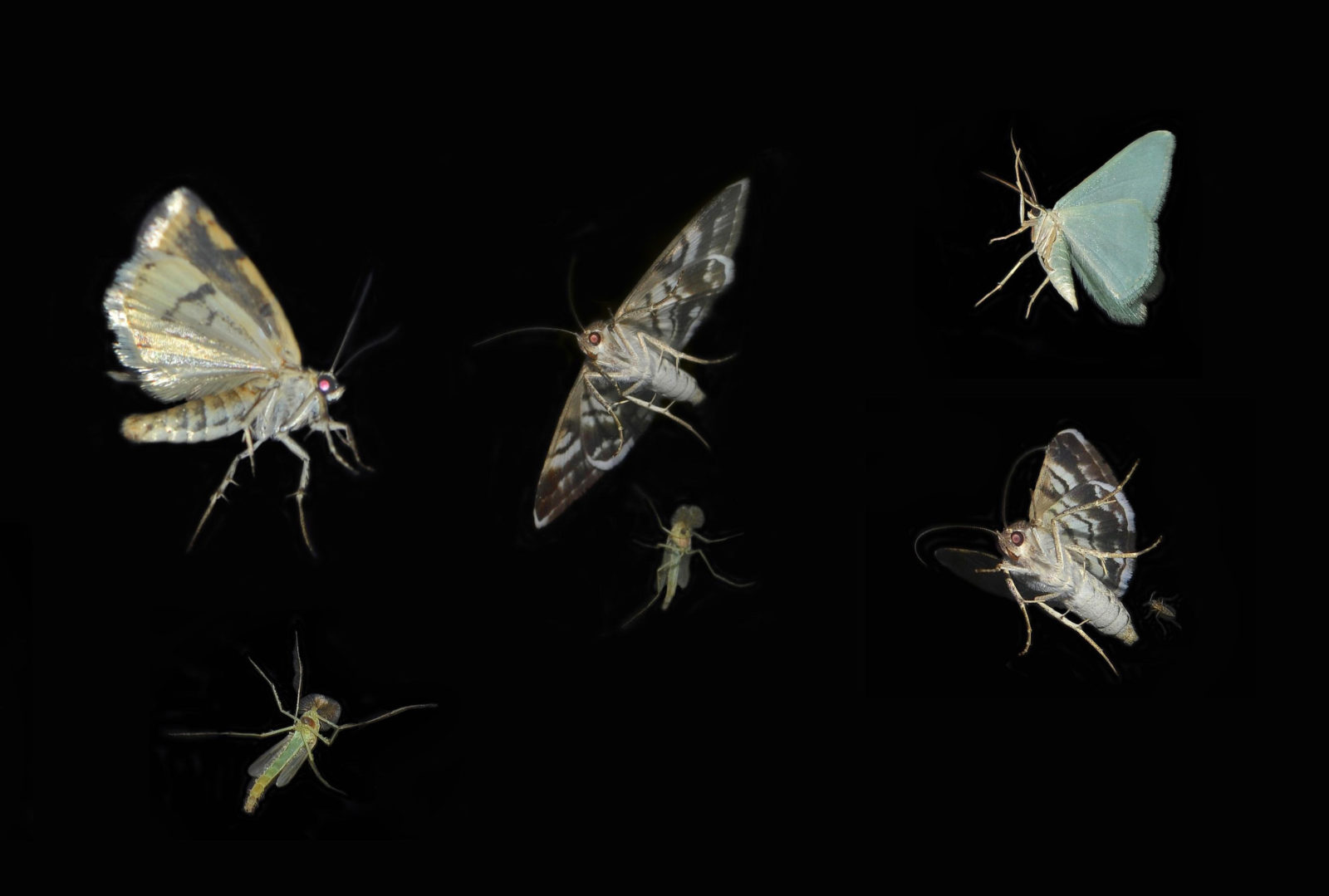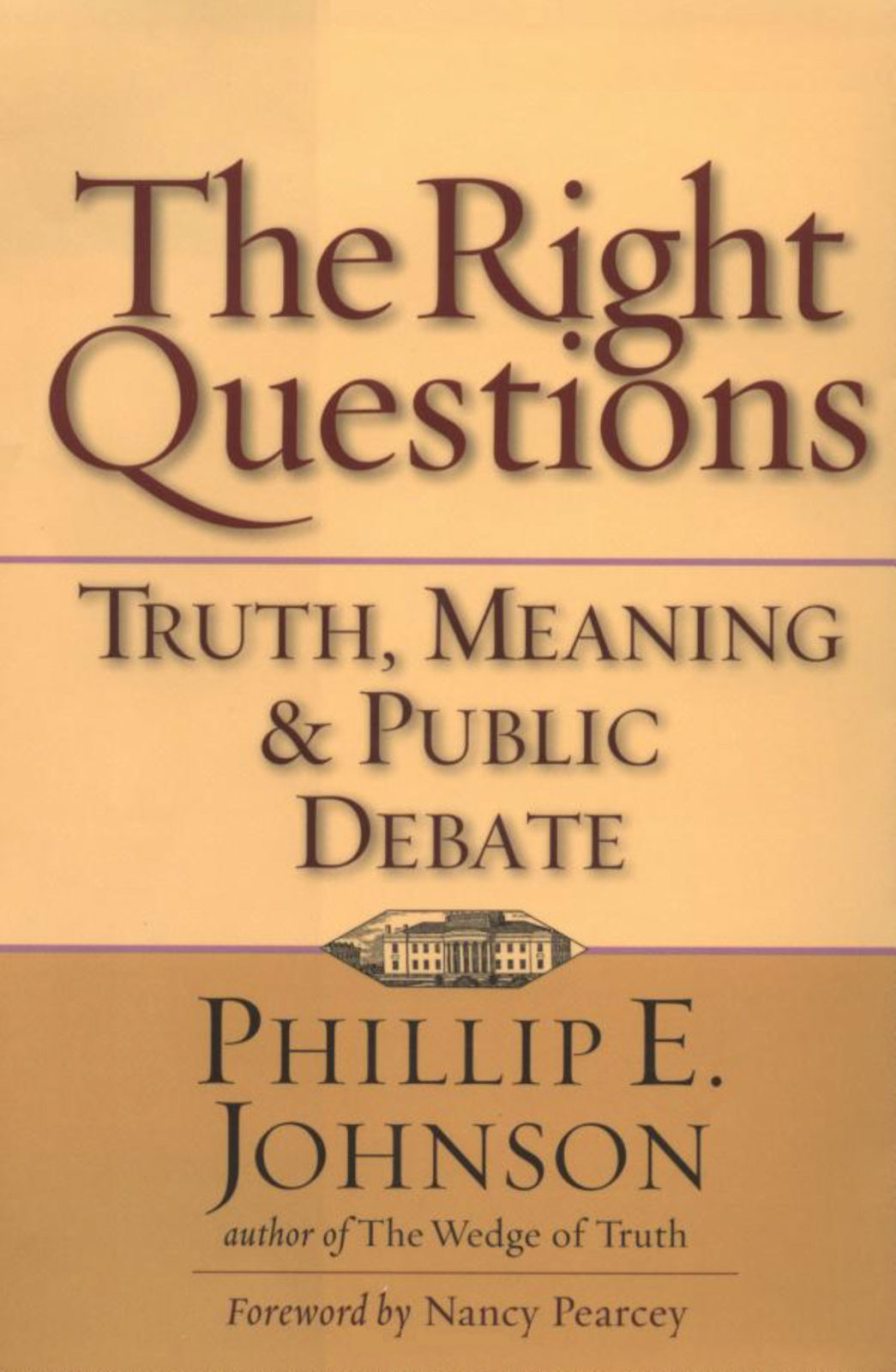The Third Mode of Explanation
Report from Hillsdale College Symposium on ID
The symposium speakers were (in order of appearance) Larry Arnhart (Northern Illinois University), Michael Ruse (Florida State University), Mano Singham (Case Western Reserve University), Michael Behe (Lehigh University), Niles Eldredge (American Museum of Natural History), Jonathan Wells (Discovery Institute), and William Dembski (Baylor University). The symposium ended with a Hillsdale College Faculty Roundtable chaired by David Whalen (English) and consisting Read More ›

Weird Science?
From Christianity Today: “Last week, we posted a letter from scientists Kevin Padian and Alan Gishlick in response to a piece by Jonathan Wells in the September/October issue of Books & Culture, dealing with the notorious peppered moth experiments. This week, we have given Wells an opportunity to respond. At stake are fundamental questions about truthfulness in debate — matters Read More ›
Becoming a Disciplined Science
Keynote address delivered at RAPID Conference (Research and Progress in Intelligent Design), Biola University, La Mirada, California, 25 October 2002. The aim of this conference was to examine the current state of intelligent design research.
Recently I asked a well-known ID sympathizer what shape he thought the ID movement was in. I raised the question because, after some initial enthusiasm on his part three years ago, his interest seemed to have flagged. Here is what he wrote:
An enormous amount of energy has been expended on “proving” that ID is bogus, “stealth creationism,” “not science,” and so on. Much of this, ironically, violates the spirit of science. The proof of the pudding is in the eating. But on the other side, too much stuff from the ID camp is repetitive, imprecise and immodest in its claims, and otherwise very unsatisfactory. The “debate” is mostly going around in circles. The real work needs to go forward. There is a tremendous ferment right now in the “evo/devo” field, for instance. Some bright postdocs sympathetic to ID (and yes, I know how hard a time they would have institutionally at many places) should plunge right into the thick of that. Maybe they are at this very moment: I hope so!
Every now and again we need to take a good, hard look in the mirror. The aim of this talk is to help us do just that. Intelligent design has made tremendous inroads into the culture at large. Front page stories featuring our work have appeared in the New York Times, L.A. Times, Wall Street Journal, San Francisco Chronicle, and so on. Television, radio, and weeklies like Time Magazine are focusing the spotlight on us as well. This publicity is at once useful and seductive. It useful because it helps get the word out and attract talent to the movement. It is seductive because it can deceive us into thinking that we have accomplished more than we actually have.
Two animating principles drive intelligent design. The more popular by far takes intelligent design as a tool for liberation from ideologies that suffocate the human spirit, such as reductionism and materialism. The other animating principle, less popular but intellectually more compelling, takes intelligent design as the key to opening up fresh insights into nature. The first of these animating principles is purely instrumental — it treats intelligent design as a tool for attaining some other end (like defeating materialism). Presumably if other tools could more effectively accomplish that end, intelligent design would be abandoned. The second of these animating principles, by contrast, is intrinsic — it treats intelligent design as an essential good, an end in itself worthy to be pursued because of the insights it provides into nature.
These animating principles can work side by side, and there is no inherent conflict between them. Nonetheless, there is a clear order of priority. Unless intelligent design is an intrinsic good — unless it can be developed as a scientific research program and provide sound insights into the natural world — then its use as an instrumental good for defeating ideologies that suffocate the human spirit becomes insupportable. Intelligent design must not become a “noble lie” for vanquishing views we find unacceptable (history is full of noble lies that ended in disgrace). Rather, intelligent design needs to convince us of its truth on its scientific merits. Then, because it is true and known to be true, it can become an instrument for liberation from suffocating ideologies — ideologies that suffocate not because they tell us the grim truth about ourselves but because they are at once grim and false (Freud’s psychic determinism is a case in point)….
Read More ›Elliott Sober’s Independent Evidence Requirement for Design
In his paper “The Design Argument,” Elliott Sober predicts that “human beings will eventually build organisms from nonliving materials.”[1] In that case, we could obtain clear evidence that certain organisms resulted from intelligent design whereas earlier we might have thought they were due to a Darwinian process. I consider a similar possibility in chapter 6 of No Free Lunch. Such Read More ›

Desperately Defending The Peppered Myth
pen almost any introductory biology textbook published between 1960 and 2000 and you’ll see pictures of peppered moths resting on tree trunks, put there to illustrate the classic story of natural selection in action. Since the 1980s, however, biologists have known that the story is seriously flawed. In a new book, Of Moths and Men, Judith Hooper documents the rise Read More ›

The Right Questions
The Right Questions is the product of an accomplished scholar who is reflecting upon culture and society in light of his other books which provided an extensive scientific critique of naturalistic theories of origins. In this book, Phillip Johnson, Program Advisor to Discovery Institute’s Center for Science and Culture, asks, “What are the right questions” in topics such as logic, Read More ›

The Right Questions
An ECPA 2003 Gold Medallion Finalist! Phillip E. Johnson pries the lid off public debate about questions of ultimate concern — questions often suppressed by our society’s intellectual elite. Moving far beyond matters of creation and evolution, Johnson outlines the questions we all ought to be asking about the meaning of human history, the limits of scientific inquiry, religion and Read More ›

The Peppered Myth
Open almost any textbook dealing with biological evolution and you’ll probably find photographs of peppered moths resting on tree trunks — illustrating the classic story of natural selection in action. A friend of mine says those photographs are all he remembers about evolution from his undergraduate days. Before the mid-1800s, almost all peppered moths were light-colored, but during the industrial Read More ›